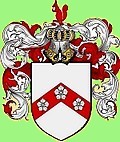 THE GILBERT FAMILY HISTORY
THE GILBERT FAMILY HISTORY
22 Upper Avenue, Eastbourne
Website created by Richard Gilbert, last updated 29 October 2022.
MAIN NAVIGATION MAP
GILBERT; Waldron 1700s & earlier
|
HASSELL; Waldron --
GILBERT; Waldron 1800s --
GILBERT; to the USA
|
SODDY; Sussex & London --
GILBERT; Eastbourne 1800s --
MORRIS; Lewes & Eastbourne
|
HEWITT & HEDGEGOTT --
GILBERT; Eastbourne 1900 onwards --
CLEMENTSON; London
|
GILBERT; in the USA
Ellen Gilbert at 22 Upper Avenue, Eastbourne.

Ellen Isabel Gilbert, widow of David Gilbert junior (1861-1902), and her five surviving children - Ellen, Charlotte, Mary, William and Richard (David had died in the First World War) - moved from 5 Old Orchard Road to 22 Upper Avenue, Eastbourne in 1921. The house was situated on the north side of Cavendish Place railway bridge but had to be demolished in the 1940s due to bomb damage in World War Two.
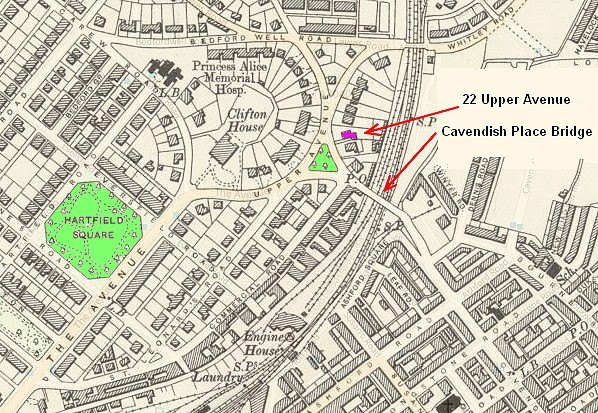
 The family had moved from 5 Old Orchard Road, Eastbourne
The family had moved from 5 Old Orchard Road, Eastbourne
 More details of Ellen Isabel Gilbert and her family
More details of Ellen Isabel Gilbert and her family
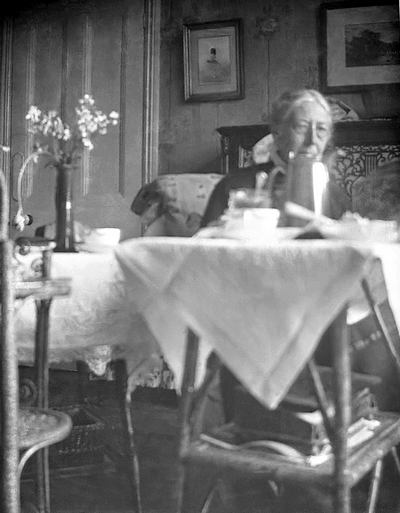
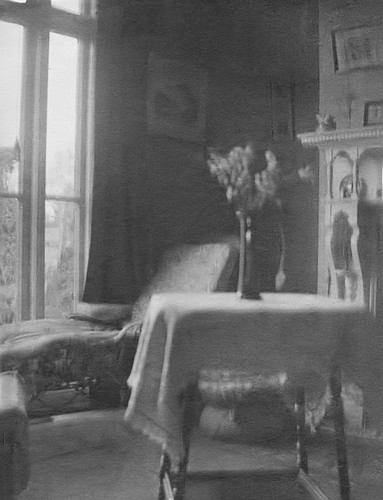
Ellen Isabel Gilbert is seen on the left of these 1930s interior photos of 22 Upper Avenue.
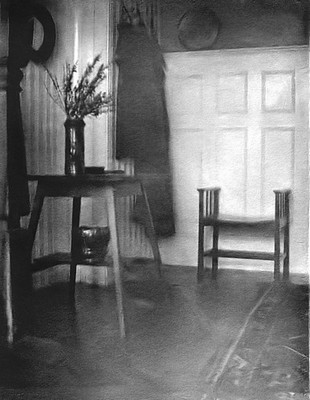
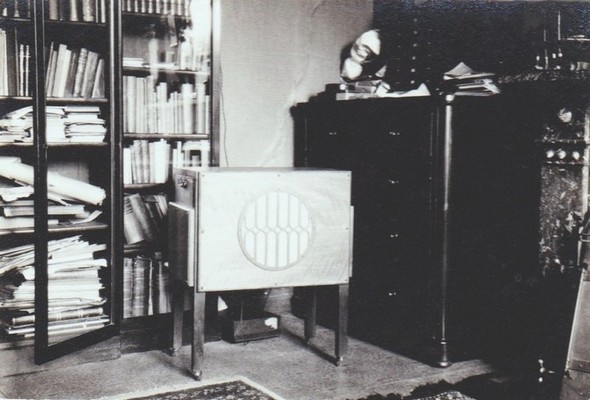
Two more interior pictures of 22 Upper Avenue. The 1931 photo on the right shows several interesting items. The large bookcase on the left, the loudspeaker cabinet (centre, made by Richard Gilbert) and (just visible on the extreme right) the trouser press, all remained in the family until the 1980s. However the large chest of drawers on the right and the miniature chest of drawers on top of it are both still in family use.
22 Upper Avenue was quite a large house, even boasting a 'music room', and was curiously shaped. There was a small pond in the garden and also a dovecote, presumably the one which had previously been at 5 Old Orchard Road.
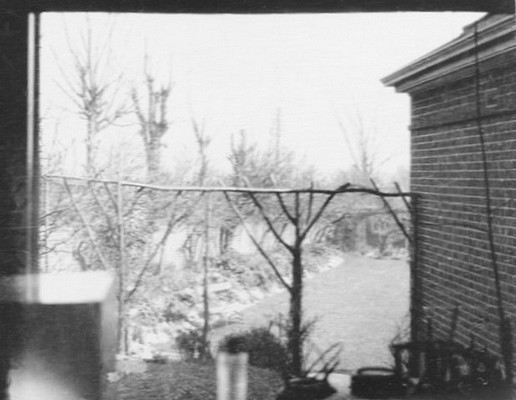
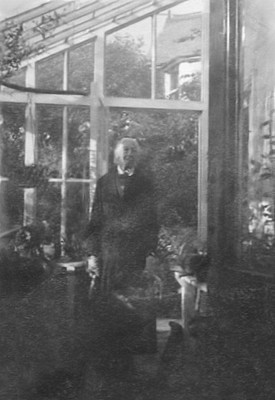
Two more pictures of 22 Upper Avenue. On the left is a view through the back window into the garden in January 1931. On the right is Ellen Isabel Gilbert in the conservatory in 1937.
Richard Gilbert made a modification to the front gate incorporating a low slot that the dogs could look through and inspect passers-by. There was a cat named Peter, and a dog named Don, who was replaced in the late 1930s by one called N....r who lived into the 1950s.
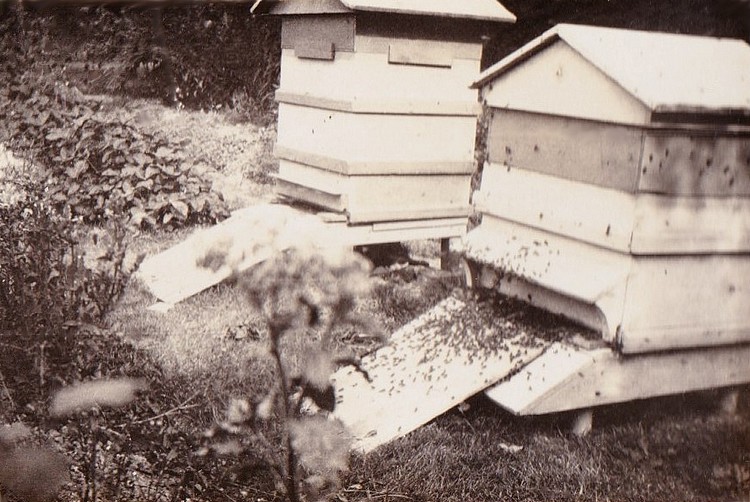
Bee hives in the back garden of 22 Upper Avenue in 1925.

The property was damaged several times during World War II, largely due to its proximity to the railway station, sidings and engine sheds, which were constant targets for German raiders. The house eventually became uninhabitable, and the circumstances appear to have been as follows;
On 14 September 1940 two raids resulted in over 100 bombs of various types being dropped on the town, resulting in damage at nearby Ashford Road
and Cavendish Place.
On 23 September 1940 twenty eight high-explosive bombs were aimed at the railway station by two aircraft at 1:50 am. There was considerable damage
in nearby Cavendish Place, Cavendish Avenue and Commercial Road. That afternoon another eight bombs were dropped in the same area.
On 28 September 1940 two raids by single aircraft took place within 20 minutes of each other in the early evening. Cavendish Place and Tideswell
Road were badly hit with people trapped under wreckage for many hours. Four died and fourteen were injured. Cavendish Bridge was closed to heavy
traffic.
On 2 October 1940 Hartfield Square and The Avenue were hit. One house was demolished and twelve persons were injured.
On 8 October 1940 there were three raids (each by single aircraft) within two and a half hours in the late afternoon. About twenty four heavy
calibre high-explosive bombs, oil bombs and delayed-action bombs were dropped causing considerable damage. The railway areas again took a heavy
beating and a bomb penetrated Cavendish Bridge, exploding on the railway line beneath. Once again the bridge was closed. One dead and three injured.
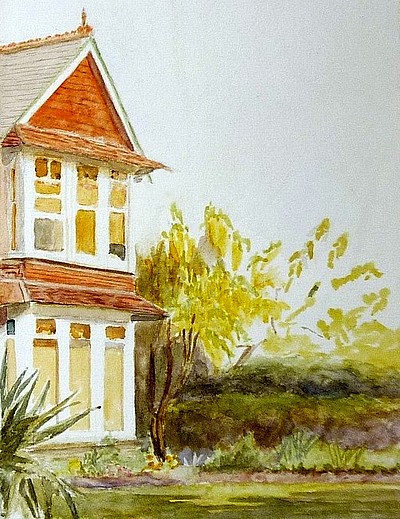
The front of 22 Upper Avenue, painted by Charlotte Gilbert in 1922.
The original is in the archive of the Towner Art Gallery, Eastbourne.
Although the above raids were only a fraction of those taking place around the town, it can be seen that the immediate vicinity of 22 Upper Avenue was becoming very dangerous. This last raid, I believe, may have caused some damage to the house which forced the family to leave - or at least persuaded them that it was too dangerous an area to live in.
Three photos taken by William Gilbert of himself, his mother and his sister Mary (1940/P2, P3 & P10) in the garden of the house are dated September 1940, while another at Ryderswells Cottage (1940/P11) dated October 1940 is marked "after the evacuation". So it would appear that they moved out to the country around this time. H R Gilbert has a copy of 'Eastbourne 1939-1945' which lists every bombing raid, and the attack of 8th October has been marked by someone in pen. It seems reasonable that this raid was therefore a significant family milestone, and I suspect that that they moved immediately after it.
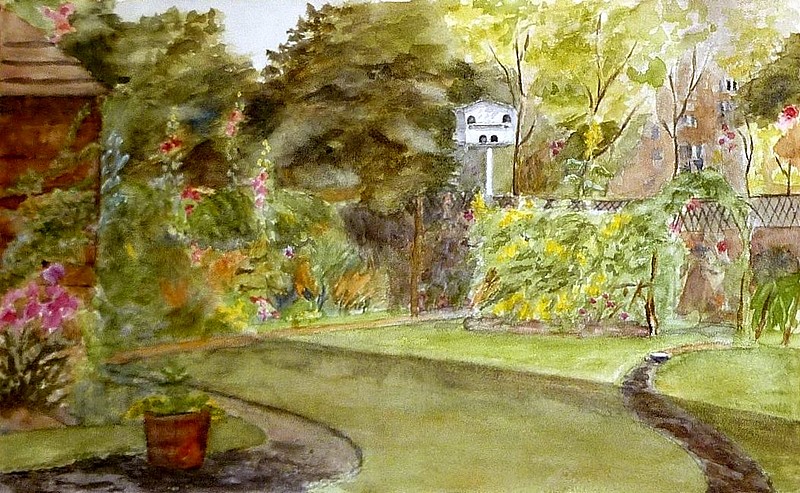
The garden of 22 Upper Avenue, painted by Charlotte Gilbert on 24 May 1922.
The original is in the archive of the Towner Art Gallery, Eastbourne.
Elsie Gilbert (1906-1990, Richard's wife) wrote "In the 2nd World war they (Ellen and her three daughters) were sometimes at Ryderswells Cottage and, during one of such periods, a small bomb (incendiary) fell on 22 Upper Avenue, after which they did not live there again. No.3 Bourne Street however belonged to them and, it then being empty, they lived there". This may not be quite accurate, but it would seem that the house was not occupied again after the October 1940 'evacuation'. Bombs continued to fall on the house and area, and a raid on 10 November caused considerable local damage. William Gilbert revisited the house in December 1940 and took three photographs (1940/P4, 5 & 6) which appear to show broken windows, uprooted trees, a hole in the lawn, an overturned garden seat and a collapsed wall. Richard, Elsie and young David Gilbert visited 22 Upper Avenue on 5 January 1941 and inspected the damage. They were staying at Ryderswells Cottage, Vines Cross, for a month with the evacuated Eastbourne Gilberts. It must have been very cramped!
 Ryderswell Cottage, Vines Cross, Horam.
Ryderswell Cottage, Vines Cross, Horam.
The following month (February 1941), William again took photographs (1941/P3 & 4) showing his dejected sisters walking about in the overgrown garden. Also in July Richard, Elsie and David spent a fortnight at 3 Bourne Street, which had obviously come into use by that time as an alternative to 22 Upper Avenue. They visited 22 and picked raspberries in the garden.
The first of the 'tip and run' raids took place on 4 May 1942 when nine Messerschmitt Bf.109s came in from the sea at wave-top height, climbed up over the cliffs at Beachy Head and turned to swoop down over the town, dropping their bombs and then racing back out to sea, shooting at a fishing boat as they went. A bomb fell on a train on the line by Cavendish Bridge, and others fell on the station, the coal wharf and in Commercial Road. Another raid hit the station 3 days later.
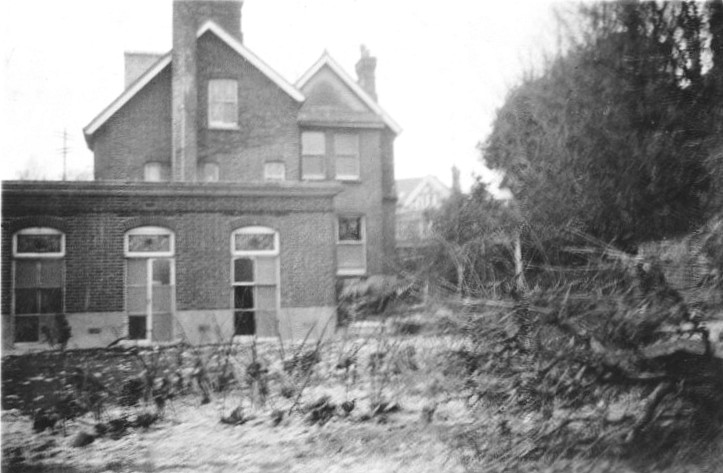
The rear of 22 Upper Avenue in December 1940 after the bomb damage. Photo by William Gilbert.
It is not known whether the house was now beyond repair, or indeed whether it was demolished around that time, but the most serious night raid of the war took place on 11 August 1942, which included some direct hits on the station and in Upper Avenue. Eight or nine enemy aircraft came in ones and twos between 1am and 1:30, dropping flares followed by about 2,000 incendiaries and 47 high-explosive bombs of a new type (some of the latter failed to explode). Surprisingly only 10 people died, including 8 Canadian soldiers in a shelter.
A jagged piece of shrapnel weighing around 400 grams has survived and is preserved among family items. It is labelled as having been recovered from the garden of 22 Upper Avenue in 1942. On 11 August 1943 the railway station was again hit by high explosive bombs and several trains were damaged. In September 1943 Richard, Elsie and David were staying at Ryderswells Cottage again, and Richard visited the abandoned 22 Upper Avenue to inspect it. There are no further records of the property but it was subsequently demolished and several new houses now occupy the site of the house and garden.
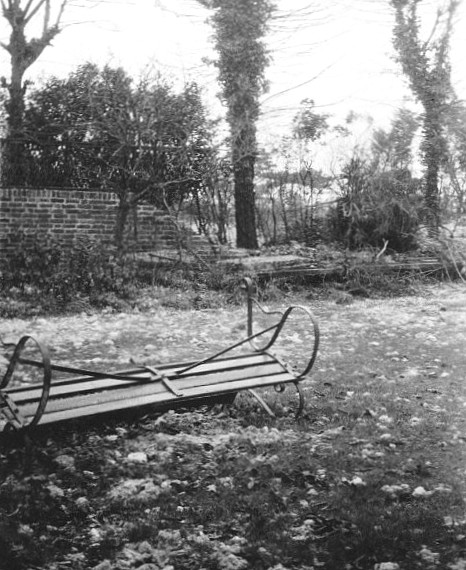
Another December 1940 picture by William Gilbert of bomb damage at 22 Upper Avenue. A collapsed wall and upturned bench in the garden.
After living in 'exile' at Ryderswell Cottage and 3 Bourne Street, the family eventually settled down at 101 Enys Road, Eastbourne from 1946 onwards. The house was rented, not purchased, and they stayed there until 1960.
